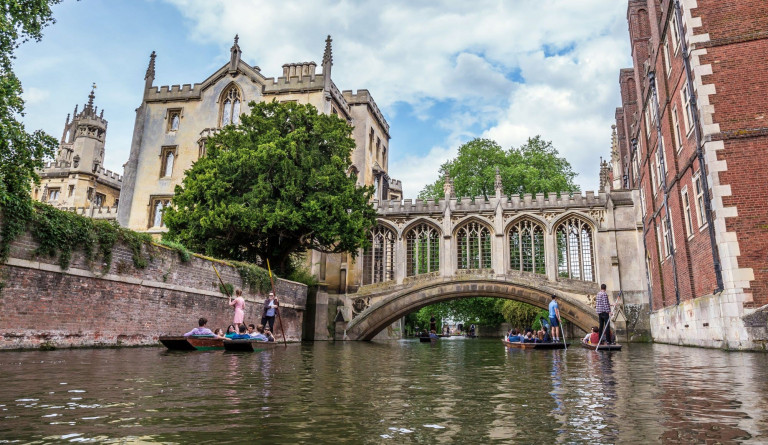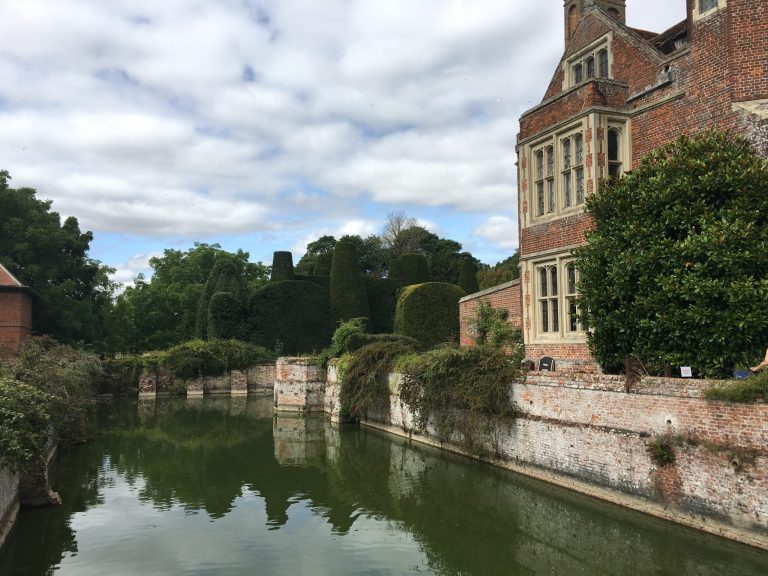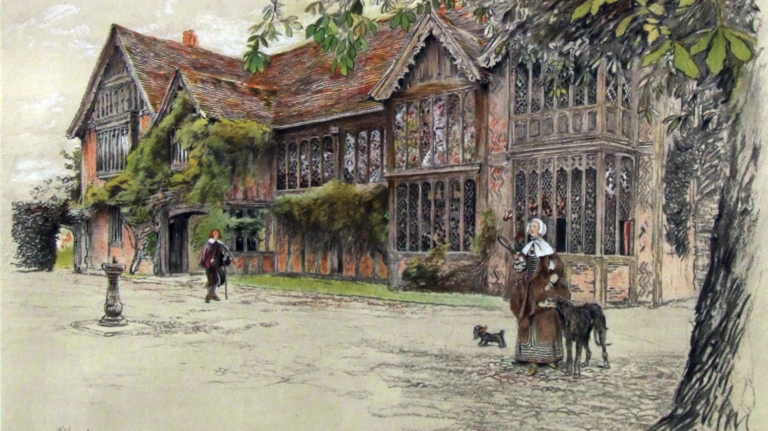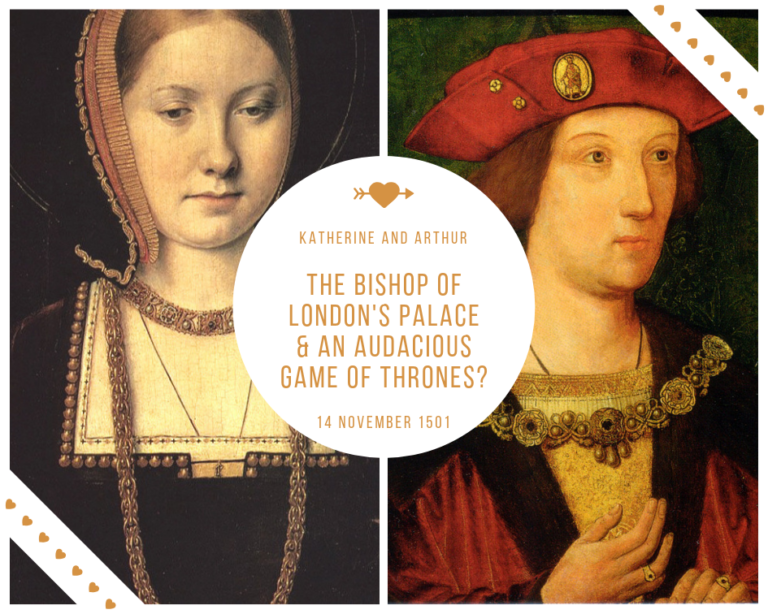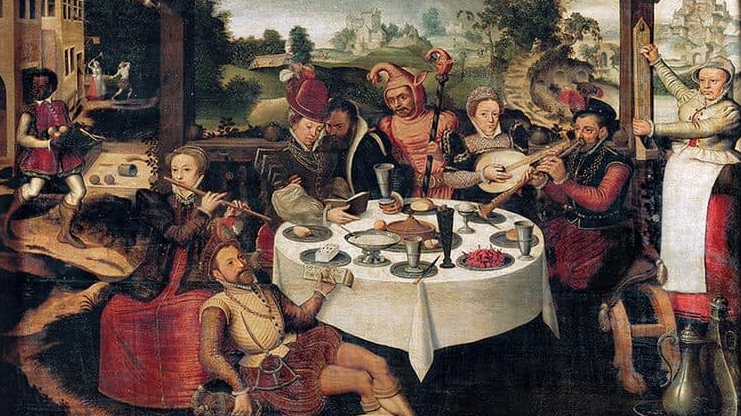Nottingham Castle: A Sinister Place ‘Full Royal’
You probably won’t know this, but in the sixteenth century, Nottingham Castle was one of THE premier castles in all of England. It was on a par with The Tower of London, Windsor and Dover Castles in terms of size, might and importance. Built just after the Norman Conquest of England in 1066, Nottingham Castle soon became, and remained for over 500 years, the administrative centre of the Midlands.
Its strategic position, close to where a major north /south highway crossed the River Trent, made Nottingham Castle of great importance to medieval and early Tudor kings, who wished to control the north of England. However, although the castle pops up in the folklore surrounding Robin Hood, (who plied his trade of robbing the rich to help the poor in nearby Sherwood Forest), it is virtually never spoken about in relation to its Tudor history.
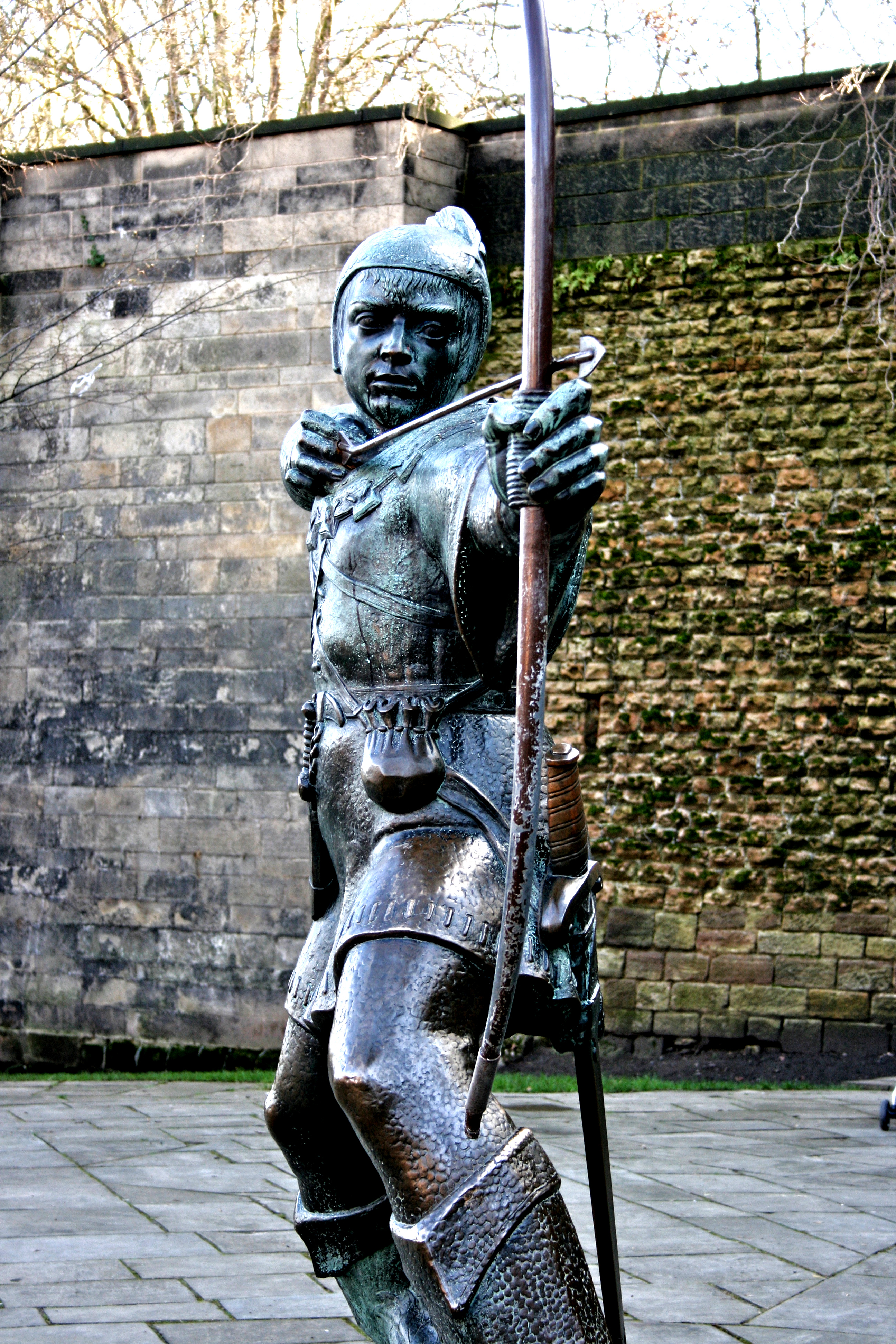
However, Nottingham Castle was visited three times by Henry VII (including when he used it as his base for the final battle of The War of the Roses against the pretender, Lambert Simnel, in 1487); by Henry VIII in 1511 (note that Nottingham Castle also played a role in the latter’s response to The Pilgrimage of Grace in the late 1530s), and it was the proposed meeting place between Elizabeth I and Mary Queen of Scots, planned for 1562 – a meeting which, of course, never happened. So, a location of some significance if you love your Tudor history!
In our exploration of the castle, you are invited to join the entourage of King Henry VII on his first northern progress of 1486. Having left London in March of that year, the king is wending his way to York. Where, by asserting his royal authority and status, he hopes to cement alliances and bring to heel those who remain loyal to the defeated House of York.
On the Road to Nottingham Castle
Having left London, Henry VII and his noble retinue headed north via the likes of Waltham Abbey, Cambridge and Lincoln. From the latter city, the king rode in a south-westerly direction towards Nottingham. In other times, Henry and his household might have lodged at Newark, a midway point between the two cities. However, because so many were dying in the town, the king elected to move on to Nottingham Castle. According to the herald who recorded the progress, Henry and the court lodged at Nottingham ‘until the next week following’, when they left, heading for their next destination: Doncaster.
John Leland has left us with a fulsome account of the castle, town and its approach from his visit in 1537. He describes Nottingham as a ‘large town’. Now, imagine for a moment that you are riding amidst Henry’s nobles, approaching this most significant of English settlements. The snaking cavalcade draws ever closer along the King’s Highway from the south. All around you are pretty, low lying meadows, which you are told often flood when the nearby rivers of the Leen and Trent are in full spate.
Drawing closer, in front of you and across the far side of the River Leen, is the ‘imposing’ town, which rises gently on the slope of a hill. However, what really catches your eye is the mighty Nottingham Castle perched high on a natural outcrop of sandstone, sheer cliffs falling away on its south side. The footprint of the castle covered an area of approximately 10 acres and consisted of 4 ‘baileys’ [courtyards]: upper, middle, outer and northern baileys. The precipitous rock formations to the west and south, and man-made defences to the east and north, made it, by reputation, one of the most impregnable castles in all of England.
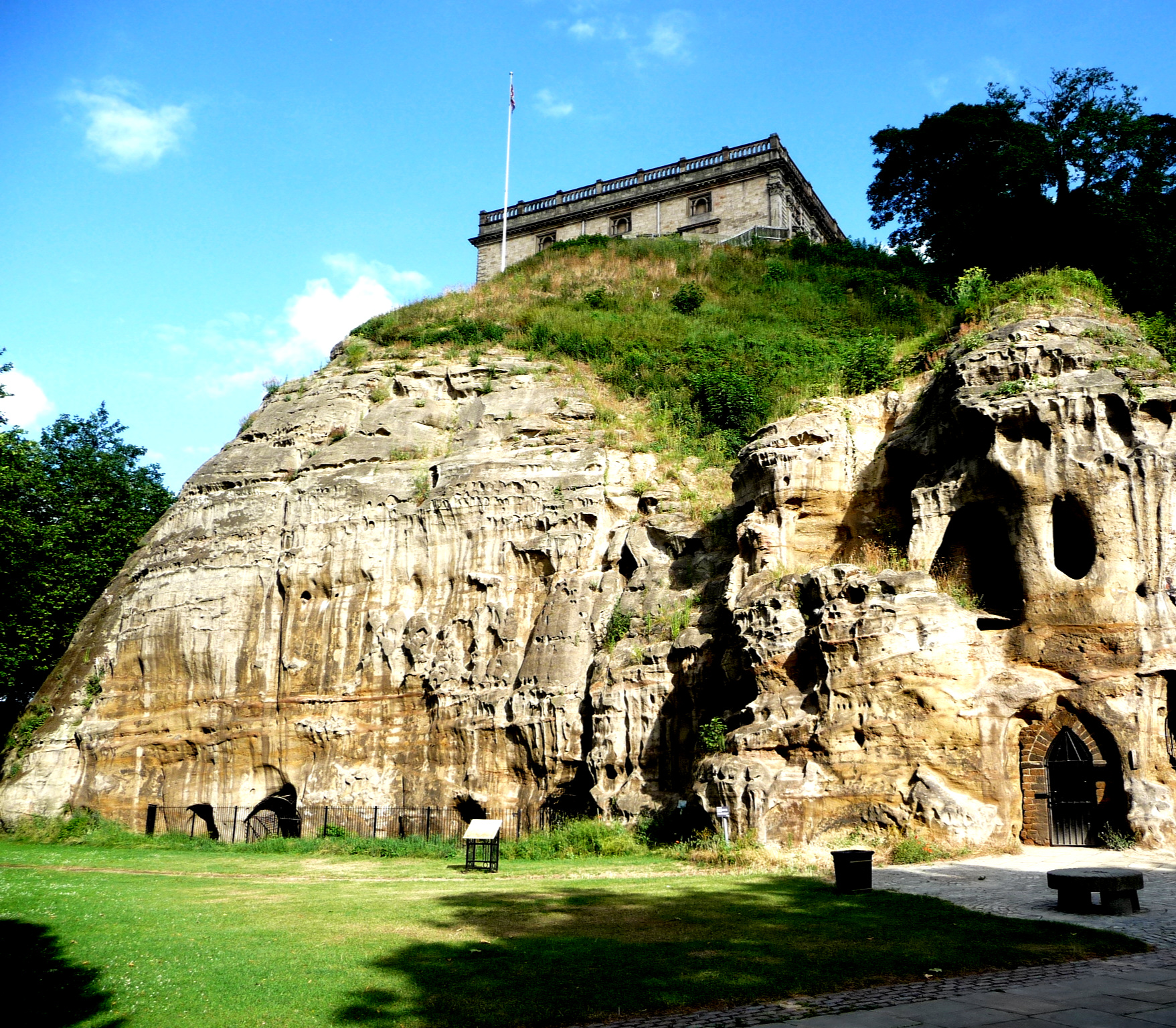
Alongside its gargantuan scale, Nottingham Castle had a formidable and daunting history associated with extreme ruthlessness. It is recorded that in 1212, King John ‘would not eat until he had seen with his own eyes the twenty-eight Welsh hostages, sons of the most powerful and illustrious families in Wales hung on the castle walls’. These ‘hostages’ were boys of between 12-14 years. Their pitiable cries were plainly audible as they were led to the ramparts and to their deaths.
Some 100 years later, it was at Nottingham Castle that the supporters of King Edward III managed to gain entrance to one of the many underground sandstone passages, tunnelled out beneath the castle. They seized the king’s estranged wife’s lover, the hated Roger Mortimer, via a passage that was to become known as Mortimer’s Hole. He was subsequently taken from the castle to London to be executed at Tyburn on 29 November 1330.
For happier tales, we can look to the latter part of the fifteenth century, when Edward IV declared himself king at Nottingham. He would go on to do some of the most extensive refurbishments of the castle, creating a whole new suite of royal apartments, and a grand privy tower, across the entire north wall of the middle bailey. This meant that the old medieval royal lodgings in the inner bailey were abandoned by the royal family. Leland eulogised about Edward IV’s ‘new’ buildings when he laid eyes on them in 1537. It is around this time that the castle was said to be at the height of its glory, and he writes in his Itinerary of ‘the most bewtifullest part and gallant building…a right sumptuous place’.
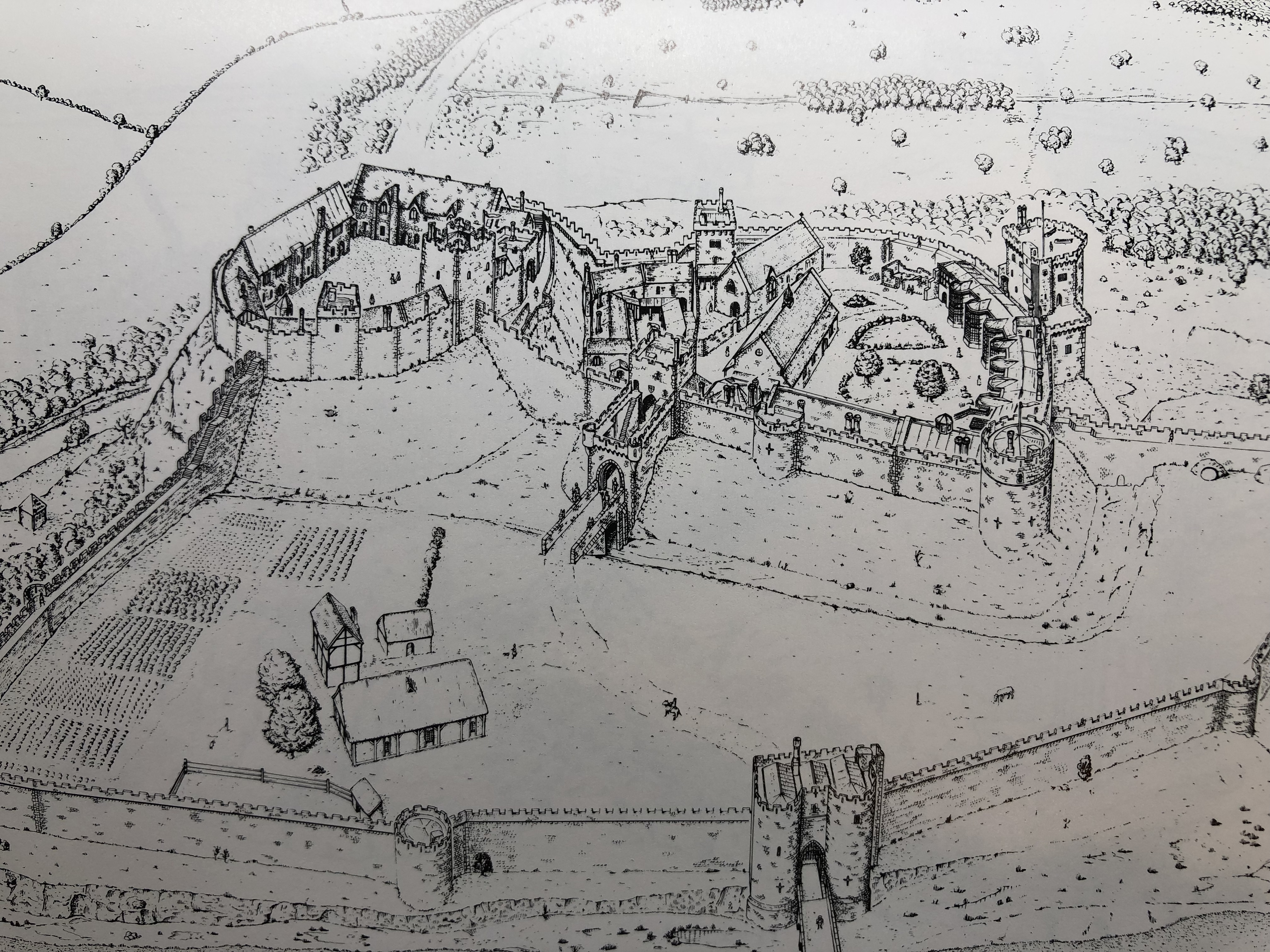
It was to this refurbished castle that Henry came during the first of his three visits to Nottingham Castle.
Nottingham: A Strategic Midlands Town
As we have already heard, Henry approached Nottingham from the south of the River Trent. In fact, as we hear in the herald’s account, he was met by the great and the good of Nottingham one mile south of that river:
‘The mayor and his brethren of Nottingham, in scarlet gowns on horseback with 6-700 [?] other honest men, all on horseback received the king a mile by south Trent and between both bridges the procession both of the frerez [? friars – there was a friary in the town] and the parish churches received the king and so proceeded through the town to the castle.’
Escorted across the bridge spanning the Trent, the royal party would cross yet more meadows on the approach to the town before being met by ‘the frerez and parish churches’ and thence being escorted to the final bridge, spanning the Leen, which gave access to the south-west corner of the medieval town. Leland describes how the course of this second river caused it to flow around the foot of the castle to the west of the town, and then along the town’s southern perimeter.
A plan of Nottingham, showing its appearance circa 1500, plainly shows the relationship between the castle, the town and the river. Clearly seen is its main access point, the Leen Bridge, which is comprised of 6 arches, spanning several rivulets.
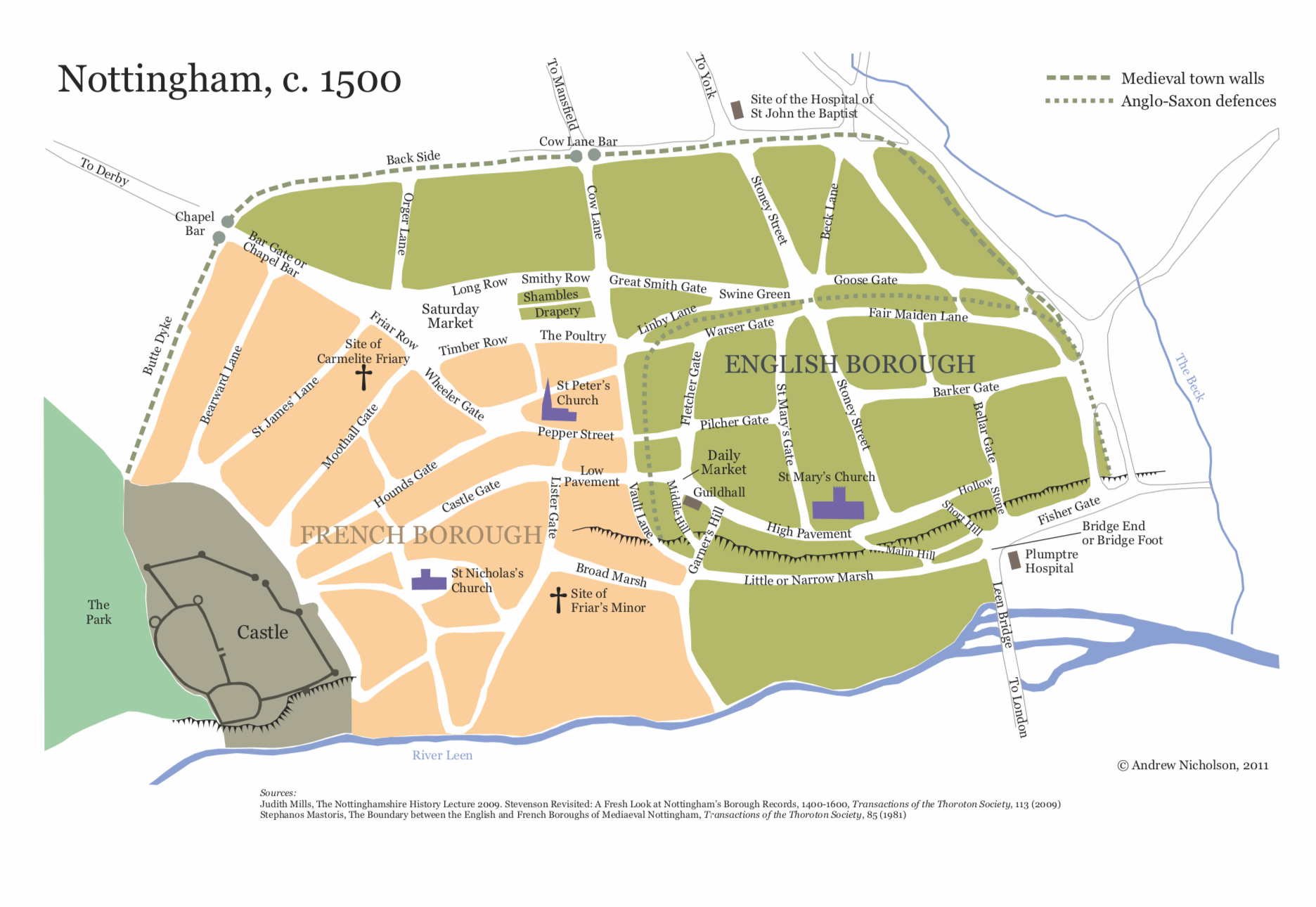
At the time, Nottingham was a partially walled town that was entered via one of several gates. By 1537, Leland noted that ‘much of the wall is now down, and are all the gates, except two or three.’ However, they may well have been standing in the late fifteenth century. You might imagine Henry, his nobles and household, entering Nottingham through the English Borough (on the east side of town), travelling along the High Pavement before entering the heart of the town: the marketplace.
Here, we turn to John Leland once more; he leaves us with a vivid image of what we might have seen that day. The buildings are made of timber and plaster but are ‘well built’, whilst the street is of ‘very great width, with an even, paved surface’. He concluded that ‘Nottingham’s marketplace and street [are] the finest without exception in the whole of England’…and John Leland should know, he visited most of them!
In the king’s entourage, riding atop your horse, you pass through this marketplace and in front of the Guildhall. Everywhere brightly coloured heraldic banners flutter in the April breeze, amidst cheers from the expectant and curious crowds. Moving ever forward, you cross into the street known as Castle Hill, which leads, unsurprisingly, to the first of the castle gates, part of the perimeter wall.
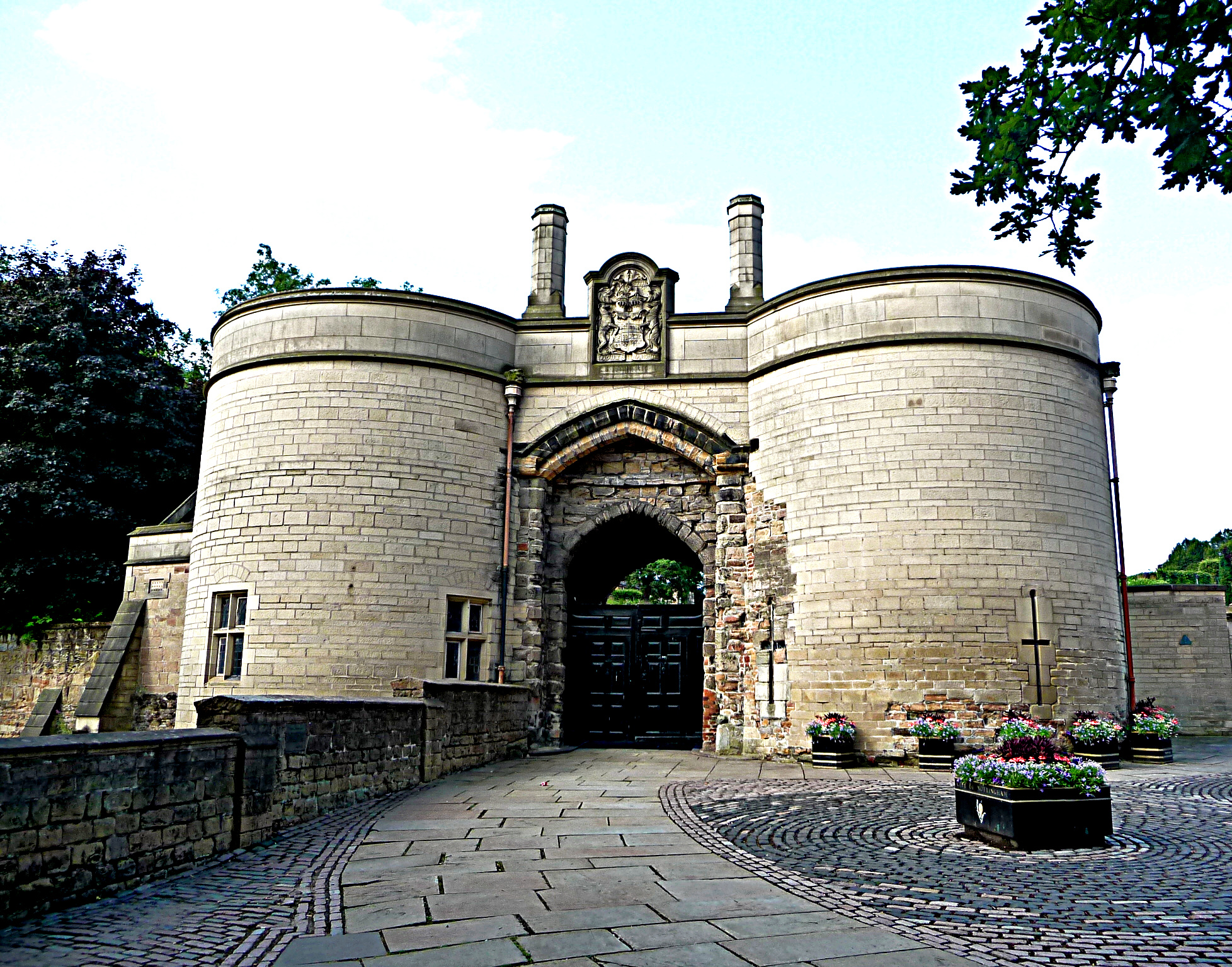
The initial point of entry into Nottingham Castle was via the walled outer bailey. This outer bailey is a large open space, containing very few buildings. It was the single largest of the castle’s four courtyards. Having crossed it, you approach an ‘imposing bridge on pillars carved with beasts and giants’. This, in turn, leads over a large ditch to reach the middle bailey via an entrance which Leland tells us is ‘exceptionally strong with towers and portcullises’.
To the north of the middle bailey were the grand, sweeping, royal lodgings built by Edward IV just 10 years earlier, while on the south side of the middle bailey, a cluster of buildings was arranged around what became known as the ‘middle ward’, this included the castle’s chapel. The great hall seems to have stood alone in the centre of the bailey. Finally, on the highest and most dramatic outcrop of land, was the inner ward, reached by crossing a second dry moat via a bridge. This was the site of the early, south-facing medieval palace, including the keep. As we have already noted, these royal lodgings had been relocated to the far northern side of the plateau by the time Henry passed through the castle’s sturdy gates.
The Royal Apartments at Nottingham Castle
Having crossed the dry moat from the outer to the middle bailey, bearing right (to the north) and passing around the southern side of the great hall, you end up facing the elegant facade of Edward IV’s recent refurbishments, which Leland states is ‘an exceptionally fine piece of architecture’. According to Emery ‘the ground floor facade was stone-built…the upper floor was elaborately framed in timber’.

Following the contours of the curtain walls, the apartments are asymmetrical. A small passage bisects the range into a smaller eastern range, belonging to the king’s privy lodgings and a larger western range belonging to the queen’s side. Although only a ground floor plan now exists, Emery speculates that this arrangement was most likely repeated at first-floor level to give a suite of lodgings on both the king and queen’s sides. However, this did not mean that the king’s lodgings were smaller than the queen’s overall; as, also accessed from this same passage, via a staircase, was Edward IV’s ‘strong tower’.
This magnificent structure, which Leyland called an ‘excellent goodly tower’ contained the most privy of the king’s apartments. It was a typical fifteenth-century multi-angular structure and was intended to be resilient, as well as being the epitome of fashionable living. It projected out from Henry II’s curtain wall, had a hexagonal frontage, consisting of at least four floors. Each floor most likely comprised one large, single chamber, with fireplace and adjoining garderobe i.e. it was en-suite with all the latest luxuries of early sixteenth-century living! Four ‘splayed’ windows set into four of the hexagonal surfaces of each room must have given breath-taking views of the western edge of the town, and the surrounding countryside to the north – particularly from the top floor, the king’s bedchamber.
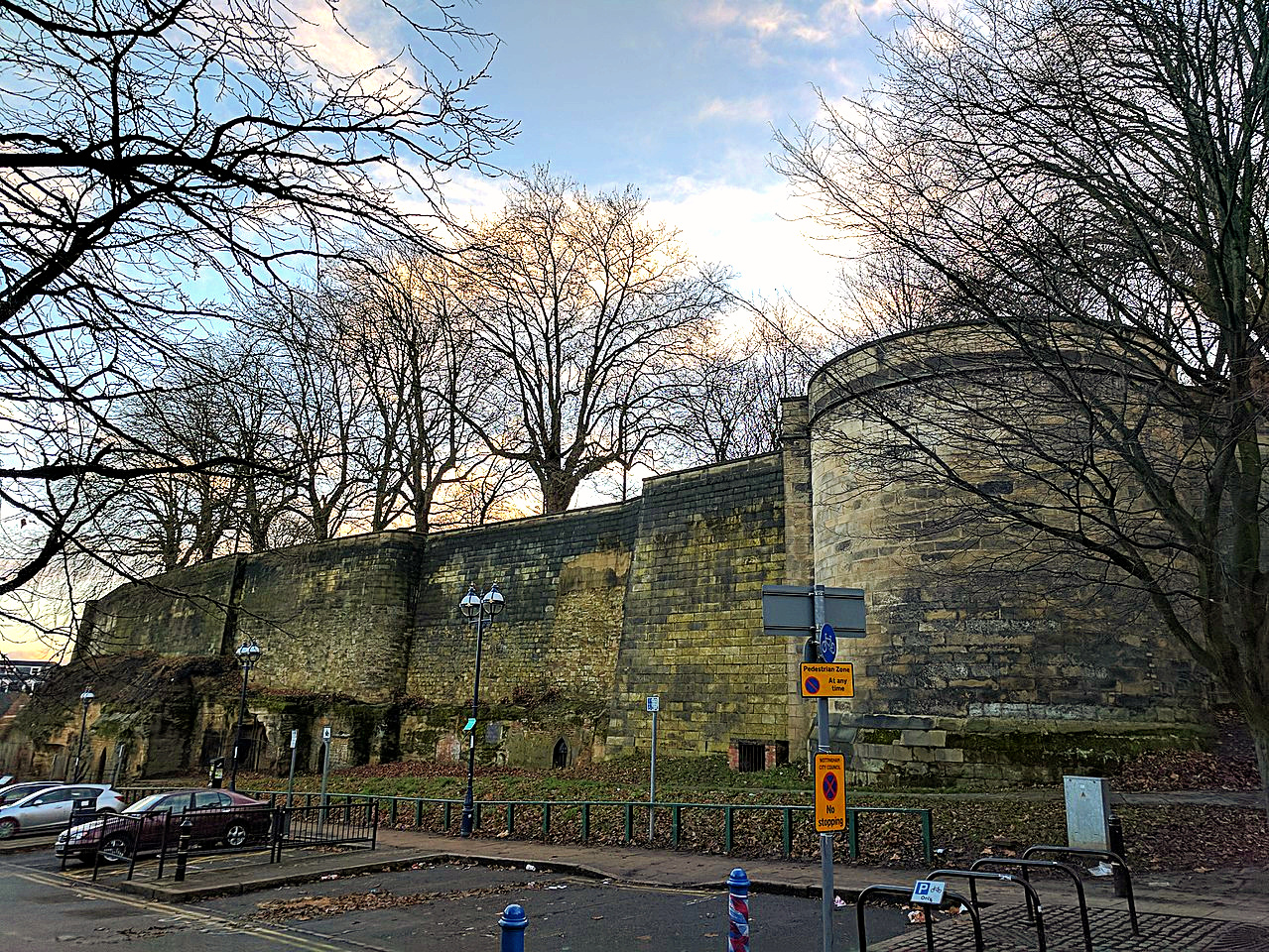
Given various archaeological finds, notably in the 1978-9 excavations, we might imagine Henry looking out across his newly conquered land through glass ennobled with paintings of the late king’s arms and emblems, whilst he walked upon tiled floors, some plain, some decorated with patterns.
A Storm Gathers in the North…
It was while the king was lodged at Nottingham that he heard rumours of a rising in Yorkshire. This was led by one of the king’s remaining arch-enemies, Francis, Lord Lovell, who was probably plotting to take York and seize the king, while his co-conspirators, the Stafford brothers, were aiming to rouse the midlands to insurrection. Henry was perturbed enough to send a message to his loyal supporters in Lincoln. He was joined at Nottingham Castle by the likes of George Stanley, Lord Strange; the Earl of Oxford and Sir William Stanley. Although, according to Temperley, Henry asked the men to come unarmed, perhaps underestimating the seriousness of the rising.
The king would return to Nottingham Castle for another pivotal event of his reign the following year, 1487. Just 18 miles or so from the town, Henry’s forces faced those of the pretender, Lambert Simnel, in the Battle of Stoke Field on 16 June. It was the final battle in the long-running saga that was known as The Cousin’s War (or The War of the Roses as we know it today). One commentator speaks of how the castle was never so grand, or well-appointed as during Henry VII’s reign. However, there is no record of Henry VII spending any money on the castle at Nottingham. He felt castles were prejudicial to his government and the safety of his realm. Thus, according to an early account by Thomas Hine, it was to the ‘adoption of this policy and his parsimony that we may safely ascribe the decay of Nottingham Castle’.
By the early seventeenth century, Nottingham Castle was rapidly falling into decay. It was subsequently demolished in 1651, following the English Civil War, when Edward IV’s tower was deliberately blown up. The gatehouse leading to the outer bailey survived and can be seen today. The foundations of the aforementioned ‘strong’ tower are apparently still visible in a nearby, private garden. The castle site was finally cleared in 1674, leaving behind very little trace of what was once one of the most important military strongholds, administrative centres and royal places in the kingdom.
Visitor Information:
Nottingham Castle has now reopened after a massive redevelopment project. Check out its website for more details. Meanwhile, if you wish to know more about the life of Henry VII, why not check out this bio by our friends at the Tudor Times.
Sources:
Nottingham Castle: A Place Full Royal, by Christopher Drage
Henry VII, by Gladys Temperley
Nottingham, its Castle, a Military Fortress, a Royal Palace, a Ducal Mansion, a Blackened Ruin, a Museum and Gallery of Art, by Thomas Hine.
Greater Medieval Houses of England and Wales, by A. Emery

